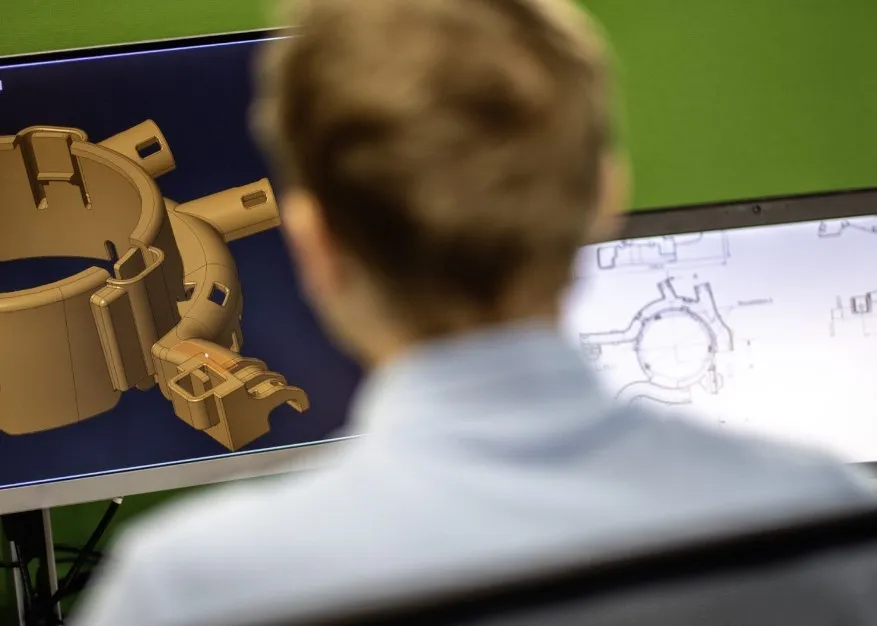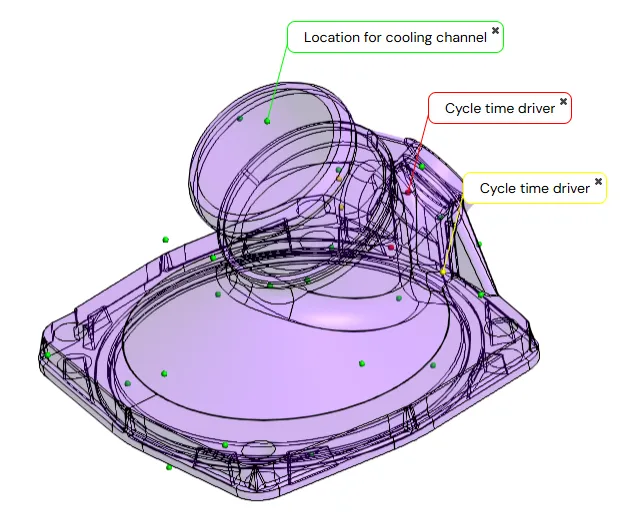by Arnaud Divialle
Have you heard the hype about metal 3D printing? Skeptical about the benefits?
If you’ve been waiting to see proof of the usefulness of metal 3D printing in plastic injection mold making, you’re far from alone.
Nonetheless, investment in the technology is increasing rapidly. In 2020, 3D printing in the molds and tooling sector was evaluated at more than $5 billion. The investment is on track to grow to $20 billion by 2030.
This rise in spending is not a result of trend-chasing. 3D printing has already begun to solve specific pain points in traditional mold making: faster turnaround, improved design flexibility, and the potential for conformal cooling are just a few of the features mold shops are looking to capitalize on.
At the same time, skepticism is still common — and justified! Many molders have already invested heavily in CNC machining equipment, EDM, and precision tooling workflows. They’re not about to toss out what works unless the advantages of additive mold making are crystal clear. So what exactly makes metal 3D printing worth considering?
If, like many other molders and mold makers, you want to take advantage of 3D printing, here’s how to identify the best way to use the technology and reap its efficiency benefits.
What is the right way to adopt metal 3D printing in mold making?

Companies aiming to reap all the benefits of 3D printing must consider new approaches towards:
- Part Design: 3D printing has its own set of design constraints
- Material selection: If you want to print your mold, several traditional mold steels are not available in 3D printing
- Part Performance: If you were to print the plastic part, 3D printed parts have a different look and feel and come with new mechanical properties that need to be accounted for
- Manufacturing: 3D printing needs a new manufacturing sequence where many steps of the traditional machining approach are no longer required
- Supply chain: Outsourced manufacturing has brought entirely new suppliers into the market What’s more, these aspects are still evolving.
Each of these shifts brings pros and cons. For example, conformal cooling channels — only realistically possible through additive in most cases — can improve cooling efficiency and reduce cycle time. But they also require different design practices and may affect mold maintenance workflows.
On the material front, options like maraging steel and Inconel are available for printed molds. However, they don't always match the wear and corrosion resistance of traditional tool steels. This has led to the emergence of even more advanced metal 3D printing materials such as Corrax from Uddeholm (check out this video from Additive Manufacturing Media at PTXPO 2025 for further discussion). Understanding how your parts perform under pressure, temperature, and flow constraints is essential before making the leap.
Many shops are also surprised by how additive mold tooling affects internal workflows. CNC departments may take on more post-processing than expected, especially with hybrid molds. EDM may still be required for certain features. And build orientation during printing affects both thermal properties and dimensional accuracy.
What’s more, these aspects of additive mold making are still evolving.
Let us show you how to bring metal 3D printing into your plastic injection operations, in the way that is best for your business.
There’s no one-size-fits-all strategy. Some molders have adopted a hybrid approach — machining the mold base conventionally while 3D printing only the inserts or areas requiring conformal cooling. This is a great way to experiment without disrupting your existing workflows. Others have tried outsourcing the additive portion to a specialized partner, which can make more sense when internal additive expertise or capital investment is limited.
But one critical piece often gets overlooked: thermal simulation.
When 3D printing changes how cooling channels are routed or how material dissipates heat, simulation must come upstream. Mold designers can use SimForm to evaluate thermal uniformity and cooling efficiency early (even before a mold design is finalized!). This proactive approach allows your team to test additive features like conformal channels against traditional alternatives and validate the ROI before you devote more time and budget to the switch. The software now features a channel recommendation feature for conformal cooling lines (see image below) to automatically suggest optimal locations and geometries early in the process.

In this on-demand webinar, we take a detailed look at the intricacies of these new approaches, so you can decide how best to leverage 3D printing technology in your business and build a strong business case before you start.
You’ll learn how leading mold shops are using front-end simulation to test assumptions, prevent surprises, and optimize for manufacturability, whether the mold is printed, machined, or hybrid.
Watch the 3D printing business case webinar on demand today.